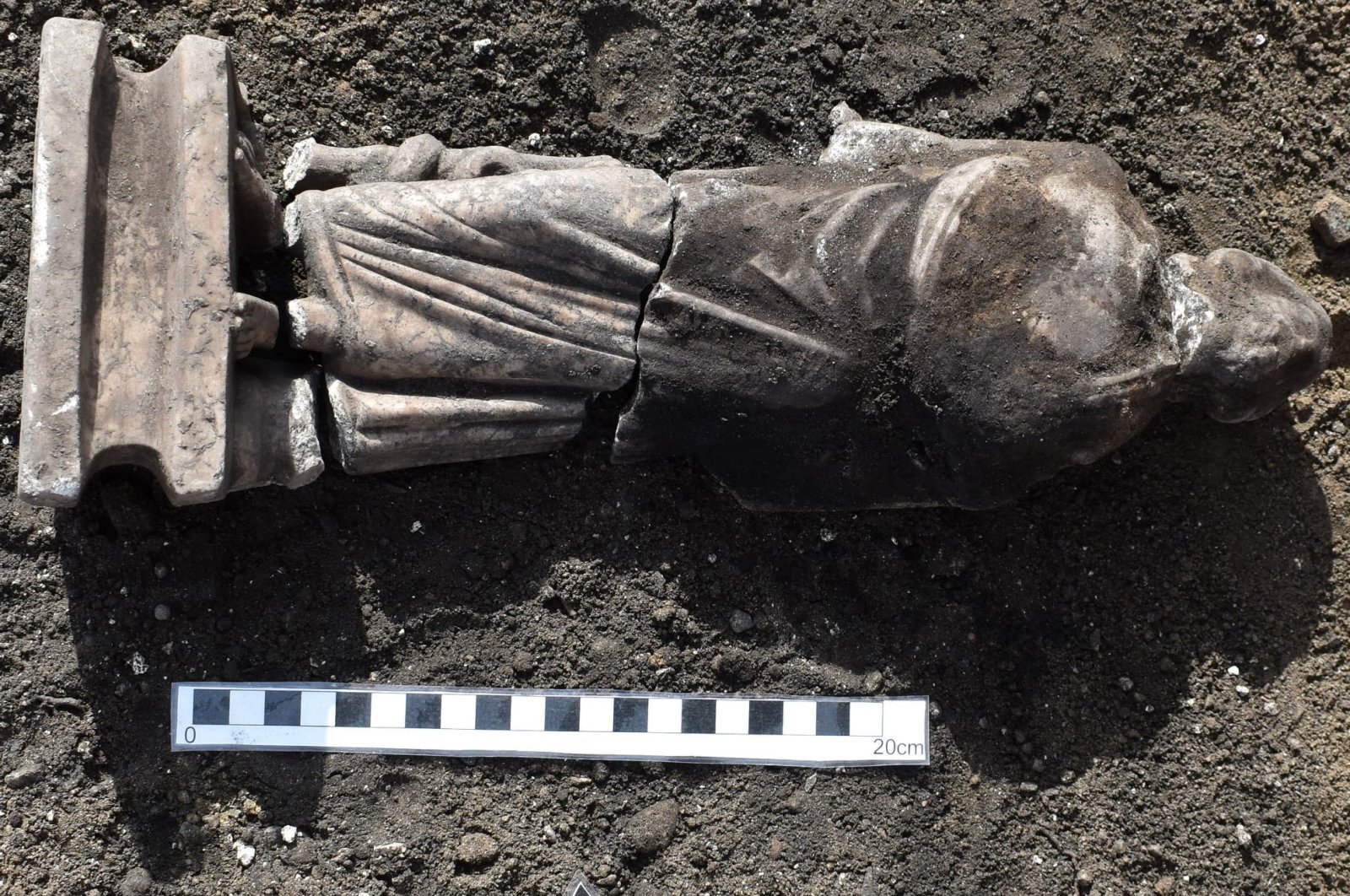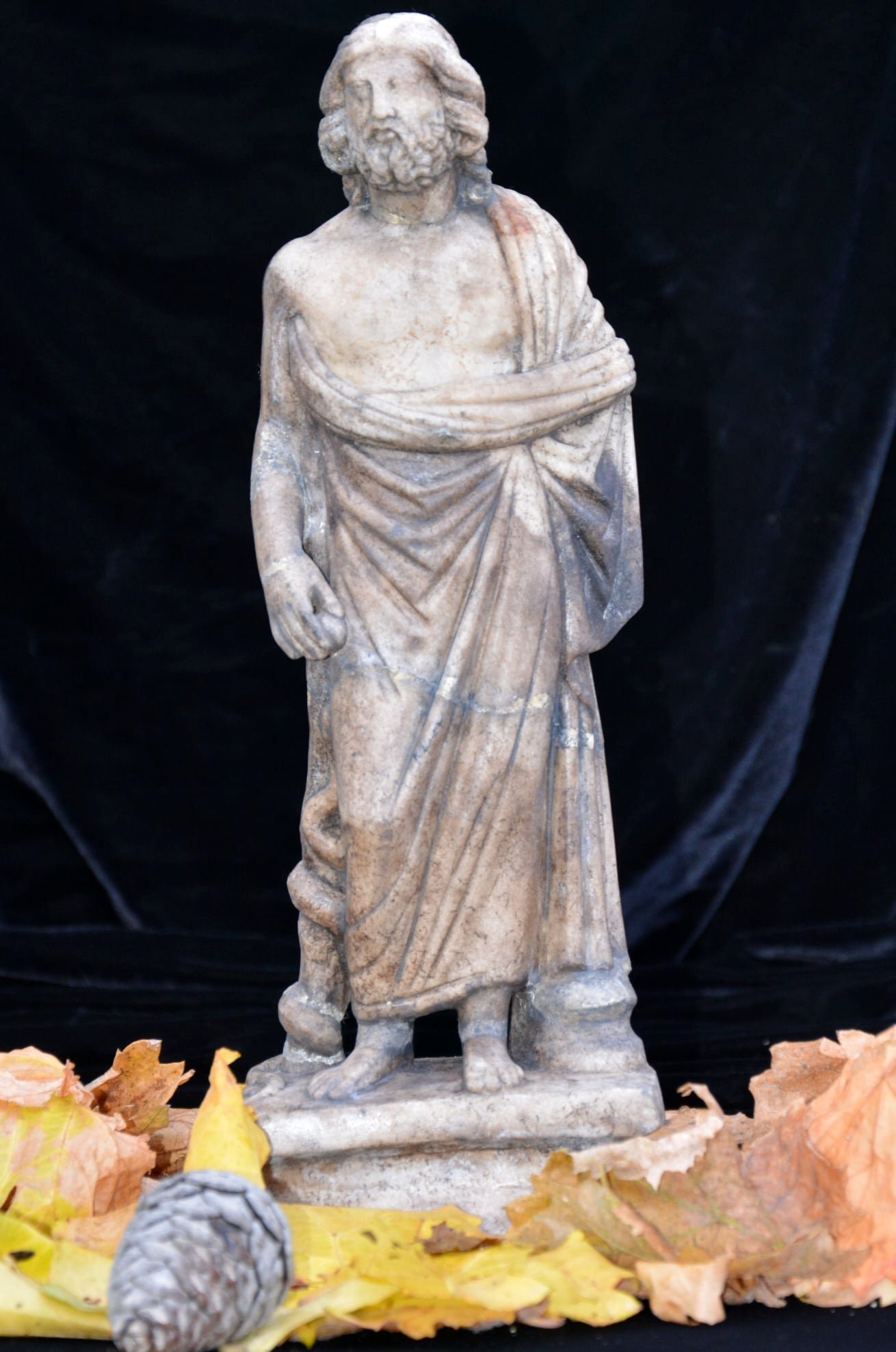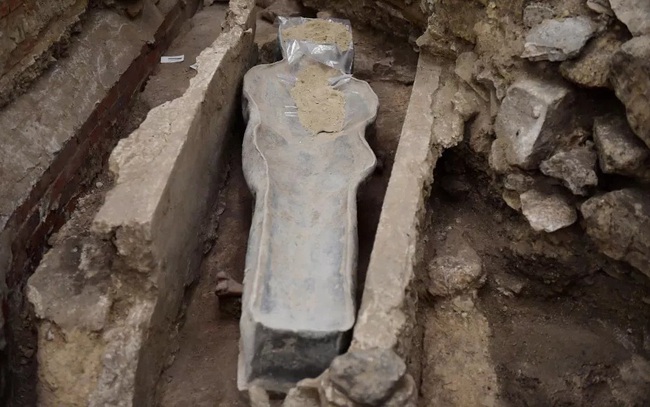A statue of the Ancient Greek god of health Asclepius and a bust of the god Serapis (Zeus) were found during the excavations in the ancient city of Kibyra in the Gölhisar district of the southern province of Burdur in Turkey.

Stating that the discovery of the statuette of god Asclepius and the bust of god Serapis in Kibyra is very important, the head of excavations, Mehmet Akif Ersoy University (MAKU) Archeology Department faculty member Şükrü Özüdoğru said, “The Asclepius statue was found during excavations in the Kaisarion [Emperor Cult Temple] structure in Kibyra. This 38-centimeter-high figurine was unearthed in six pieces in a fire layer during excavations. These pieces were integrated after careful cleaning, conservation and consolidation by experts.”

Stating that it is known that Kibyra was once a very famous city in the field of medicine according to ancient sources and the inscriptions found in Kibyra, Özüdoğru said, “The statue has verified what we know about it. The figurine was traced back to 2nd century A.D.”
Stating that during the excavations carried out in the Roman Bath Complex in Kibyra in 2019, a bust without a head made of Afyon marble was found and it was taken under protection in the excavation house, Özüdoğru said, “In the 2020 excavation season, a bearded head was found during the short-term cleaning and excavation work in the same part of the Roman Bath Complex. This head merged with the bust found in 2019 so that the bust of Serapis was completed in full. It is an Egyptian god with many attributes such as the god of light.”

He said that the statue of Asklepios and the bust of Serapis, delivered to the Burdur Archeology Museum, will be displayed in the coming days.






